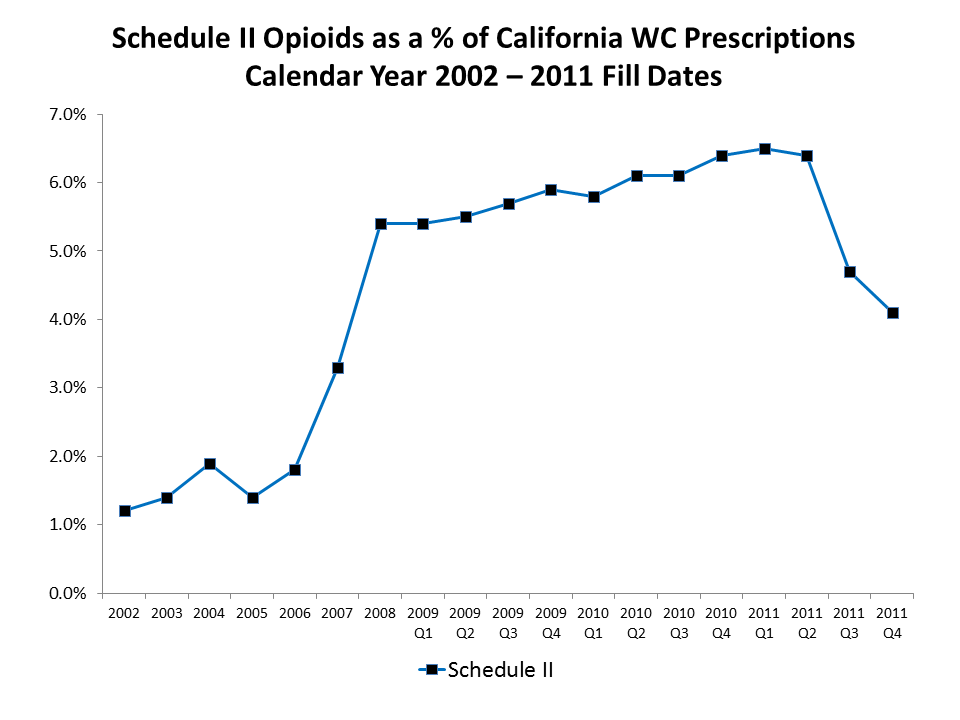The use of Schedule II opioid painkillers to treat injured workers in California has registered the most significant drop in a decade, falling from 6.7% of workers’ compensation prescriptions in the second quarter of 2011 to 4.9% of the prescriptions in the 4th quarter of 2011 according to a new California Workers’ Compensation Institute (CWCI) study.
CWCI’s study, based on a review of pharmaceutical data from a sample of 9.1 million prescriptions dispensed to California injured workers from 2002 through 2011, confirms results of earlier research that noted the surging use and cost of Schedule II opioid analgesics such as Oxycodone, Morphine, and Fentanyl from 2002 to 2008, and shows that the use of these drugs continued at record levels for nearly four years after that, eventually peaking in the 2nd quarter of 2011 at 6.7% of all California workers’ comp prescriptions – six times the proportion noted in 2002 — and 20.8% of the prescription payments – nearly five times the percentage recorded in 2002. Data updated through 2011, however, indicate a very recent downturn, as Schedule II painkillers declined to 4.9% of California workers’ comp prescriptions and 17.7% of the prescription dollars in the 4th quarter of last year, the lowest levels since 2007.
The decline in Schedule II utilization and cost that began in the second half of 2011 should be interpreted with caution as there are other potential factors that can influence the end points of utilization and cost trend lines. These include billing cycles for year-end services, data submission delay due to processing utilization review decisions and liens. It is also possible that despite the lack of any significant or explicit changes in California workers’ compensation legislation or regulations pertaining to opioids, efforts by the payor community (workers’ compensation insurers and self-insured employers) to modify medical cost containment oversight and tighten controls over the use of Schedule II painkillers may be having an impact. In addition, the strong spotlight of publicity and the growing awareness of the problems associated with Schedule II medications also may have contributed to a sentinel effect, making doctors, injured workers and payors more cautious in regard to the use of these drugs, and perhaps more willing to seek alternatives for managing pain. Continued monitoring of opioid analgesics in the California workers’ compensation system will reveal the actual trend in utilization of these scheduled drugs.
CWCI has issued the updated version of its study in a Research Update report, Changes in Schedule II & Schedule III Opioid Prescriptions and Payments in California Workers’ Compensation, which is posted on the Institute’s website at www.cwci.org. CWCI members and research subscribers may also log onto the website for a summary Bulletin.
* This publication incorporates material changes to underlying data and results originally reported and published in July 2012.

